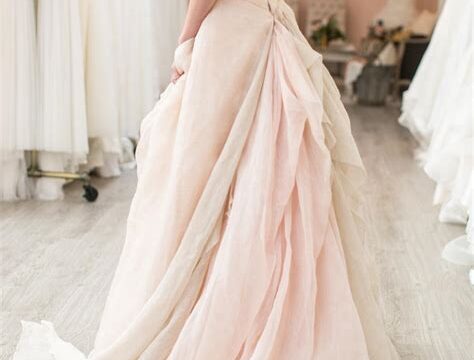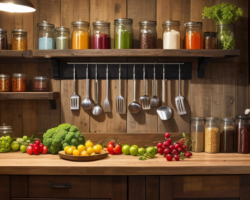Understanding Different Wedding Dress Styles
When it comes to planning a wedding, one of the most exciting and important decisions a bride-to-be has to make is choosing her wedding dress. With so many options available, it can be overwhelming to decide on the perfect style. That’s why understanding the different wedding dress styles is essential. Each style has its own unique features and can help portray the bride’s personal style and theme of the wedding.
There are several popular wedding dress styles to consider, such as Ball Gown, A-Line, Mermaid, Sheath, and Empire. Ball Gown dresses are characterized by their fitted bodice and full, voluminous skirt, creating a fairy-tale princess look. A-Line dresses have a fitted bodice that gradually flares out from the waist to form an “A” shape, flattering all body types. Mermaid dresses are fitted through the bodice and hips, then flare out dramatically at or below the knees, emphasizing the curves. Sheath dresses have a slim, form-fitting silhouette that drapes straight down from the neckline to the hem, perfect for a sleek and modern look. Lastly, Empire dresses have a high waistline that falls just below the bust, with a flowy and relaxed skirt.
The table below summarizes the key features of each wedding dress style:
| Wedding Dress Style | Description |
|---|---|
| Ball Gown | Fitted bodice, full skirt |
| A-Line | Fitted bodice, gradually flares out |
| Mermaid | Fitted through bodice and hips, flares out dramatically below knees |
| Sheath | Slim and form-fitting silhouette |
| Empire | High waistline, flowy skirt |
It’s important for the bride to consider her body type, venue, and overall wedding theme when choosing a wedding dress style. For example, a ball gown would be perfect for a grand, formal wedding in a traditional setting, while a sheath dress would suit a beach or garden wedding. A-line dresses are versatile and can be worn for various wedding styles.
In conclusion, understanding the different wedding dress styles is crucial for every bride-to-be. By familiarizing themselves with the various silhouettes and their unique features, brides can narrow down their search and find the perfect dress that not only flatters their body type but also reflects their personal style and the theme of their special day.
Exploring Current Wedding Dress Trends
The world of wedding fashion is constantly evolving and changing, with new trends emerging every season. If you’re a bride-to-be, it’s important to stay up-to-date on the current wedding dress trends so you can find a gown that not only makes you feel beautiful, but also reflects your personal style. In this article, we’ll be exploring some of the latest wedding dress trends that are taking the bridal fashion world by storm.
When it comes to wedding dress trends, **versatility** is key. Brides nowadays are opting for dresses that can be worn in multiple ways, allowing them to change up their look throughout the day. One popular trend is the **detachable skirt**. This allows you to have a full, voluminous skirt for the ceremony and formal photos, and then remove it later to reveal a sleeker, more relaxed silhouette for dancing and mingling with your guests.
Another trend that’s been gaining popularity is the **off-the-shoulder** neckline. This style is feminine and romantic, offering a delicate and flattering frame for the face and shoulders. Whether you choose a sweetheart neckline with off-the-shoulder sleeves or a fully exposed collarbone, this trend adds a touch of elegance and sophistication to any wedding dress.
**Statement sleeves** are also having a moment in the wedding dress world. From dramatic bell sleeves to billowy bishop sleeves, these eye-catching details can add a sense of drama and flair to an otherwise simple dress. Whether you prefer clean and simple lines or intricate and bohemian lace, statement sleeves can take your wedding dress to the next level.
- Versatile options: detachable skirts
- Elegant and romantic: off-the-shoulder necklines
- Dramatic and eye-catching: statement sleeves
| Trend | Description |
|---|---|
| Versatile options: detachable skirts | Dresses with detachable skirts allow brides to change up their look throughout the day, going from a full, voluminous skirt for the ceremony to a sleeker silhouette for dancing and mingling. |
| Elegant and romantic: off-the-shoulder necklines | Off-the-shoulder necklines add a touch of femininity and romance to wedding dresses, framing the face and shoulders beautifully. |
| Dramatic and eye-catching: statement sleeves | Statement sleeves, such as bell sleeves or bishop sleeves, can bring drama and flair to any wedding dress, adding an element of uniqueness and style. |
Finding the Perfect Silhouette for Your Body Type
When it comes to finding the perfect wedding dress, one of the most important factors to consider is the silhouette that best complements your body type. The right silhouette can enhance your best features and create a flattering and balanced look. With so many options available, it can be overwhelming to know where to start. In this blog post, we will explore the different wedding dress silhouettes and offer tips on how to choose the perfect one for your body type.
Before diving into the specific silhouettes, it’s important to determine your body type. There are several common body shapes, including hourglass, pear, apple, rectangle, and inverted triangle. Each body type has its own unique characteristics, and understanding yours will help guide your search for the perfect silhouette. Hourglass figures have balanced proportions with a defined waist, while pear shapes have wider hips and a smaller bust. Apple shapes carry their weight in the midsection, rectangle shapes have a straight figure with minimal curves, and inverted triangle shapes have broader shoulders and narrower hips.
Now that you have a better understanding of your body type, let’s explore the different wedding dress silhouettes that are available:
| Silhouette | Description |
|---|---|
| A-line | A classic and universally flattering silhouette that cinches at the waist and gently flares out towards the hem, resembling the shape of an uppercase “A”. This silhouette works well for all body types and is particularly ideal for hourglass figures. |
| Ballgown | This silhouette features a fitted bodice and a voluminous skirt that creates a dramatic and fairy-tale-like look. It is great for creating a cinched waist and hiding the lower body, making it suitable for various body types. |
| Mermaid | A glamorous and form-fitting silhouette that hugs the body from the chest to the knees, then flares out into a dramatic skirt. This silhouette is perfect for showcasing curves and adding a touch of elegance. |
| Sheath | A sleek and minimalist silhouette that flows straight down from the neckline to the hem, skimming over the body’s curves. It is ideal for lean and athletic body types, as well as petites. |
| Trumpet | Similar to the mermaid silhouette, the trumpet silhouette is fitted through the bodice and hips and flares out above the knees into a softer skirt. It is a great choice for those who want a fitted look without the drama of a full mermaid gown. |
Remember, while these silhouettes are often associated with specific body types, it’s essential to try on different styles and see how they flatter your unique shape. Don’t be afraid to step outside your comfort zone and experiment with different silhouettes until you find the one that makes you feel confident and beautiful on your special day.
Choosing the Right Neckline to Flatter Your Features
Choosing the right neckline for your wedding dress is an important decision that can greatly enhance your overall look and flatter your unique features. The neckline of your dress plays a key role in framing your face and highlighting your best assets. With so many different neckline options available, it can be overwhelming to know which style will suit you best. In this blog post, we will explore the various neckline choices to help you make an informed decision for your wedding dress.
One of the most popular neckline styles for wedding dresses is the sweetheart neckline. This neckline is shaped like the top of a heart and is known for its romantic and feminine appeal. The sweetheart neckline is particularly flattering for brides with smaller busts as it creates the illusion of curves. It also works well for brides with broad shoulders, as it balances out the upper body and draws attention to the décolletage. For brides with a larger bust, a sweetheart neckline with straps or a corset can provide the necessary support and enhance the overall silhouette.
Another neckline style to consider is the V-neckline. This classic choice is incredibly versatile and can work well for a variety of body types. The V-neckline elongates the neck and draws the eye downward, making it a great option for petite brides. It also flatters brides with larger busts, as it creates a slimming effect and provides support. For brides with a smaller bust, a plunging V-neckline can add the illusion of curves and enhance the décolletage. The V-neckline can be modest or daring, depending on the depth and width of the V shape.
If you prefer a more conservative look, a high neckline may be the right choice for you. A high neckline, such as a bateau or jewel neckline, can add elegance and sophistication to your wedding dress. It is perfect for brides who want to emphasize their shoulders and collarbones while keeping the chest area covered. A high neckline can also balance out a larger bust and create a more proportionate silhouette. Consider adding embellishments or lace detailing to a high neckline for a touch of glamour and uniqueness.
- Sweetheart neckline: ideal for brides with smaller busts and broad shoulders.
- V-neckline: versatile choice that works well for petite brides and those with larger busts.
- High neckline: conservative option that adds elegance and balances out a larger bust.
| Neckline Style | Flattering For |
|---|---|
| Sweetheart neckline | Brides with smaller busts and broad shoulders |
| V-neckline | Petite brides and those with larger busts |
| High neckline | Brides who want a more conservative look and those with larger busts |
Ultimately, the right neckline for your wedding dress should make you feel beautiful, confident, and comfortable on your special day. Take into consideration your body type, personal style, and the overall theme of your wedding. Don’t be afraid to try on different neckline styles and consult with a professional bridal consultant for their expert advice. By choosing the right neckline, you can highlight your best features and create a stunning bridal look that is uniquely yours.
Decoding Different Fabric Choices for Wedding Dresses
When it comes to wedding dresses, one of the most important decisions a bride-to-be needs to make is the choice of fabric. The fabric of a wedding dress not only determines its overall look and feel, but also influences its comfort and durability. With so many different fabric choices available, it can be overwhelming to understand the differences and find the perfect option for your dream gown. In this blog post, we will decode the different fabric choices for wedding dresses to help you make an informed decision for your special day.
1. Satin: Satin is a popular choice for wedding dresses due to its luxurious appearance and smooth texture. It has a shiny surface and a high sheen, which adds an elegant and glamorous touch to any gown. Satin is usually made from silk or synthetic fibers like polyester. It drapes beautifully and is known for its lustrous finish, making it a timeless fabric choice for traditional and formal weddings.
2. Lace: Lace is a delicate and romantic fabric that has been a staple in wedding fashion for centuries. It is often used for creating intricate details, overlays, and sleeves on wedding dresses. Lace can be made from different materials like silk, cotton, or synthetic fibers. It adds a touch of femininity and elegance to a gown and is perfect for brides who want a vintage-inspired or bohemian look.
3. Tulle: Tulle is a lightweight and sheer fabric that is commonly used for creating voluminous skirts or veils. It is made from fine netting and has a soft and ethereal appearance. Tulle can be layered to add fullness to a dress or used as an overlay for a whimsical and romantic effect. It is a versatile fabric that can be used in various styles of wedding dresses, from ball gowns to A-line silhouettes.
Adding Personal Touches with Embellishments and Details
When it comes to choosing a wedding dress, there are many factors to consider. From the silhouette and neckline to the fabric and fit, every detail is important in creating the perfect bridal look. One aspect that can truly make a wedding dress unique and personal is the embellishments and details incorporated into the design. Whether you prefer subtle accents or bold statement pieces, there are countless ways to add your own personal touch to your wedding dress.
One popular trend in wedding dress embellishments is the use of lace. Lace adds a touch of elegance and romance to any dress style and can be used in various ways. From delicate floral lace appliques to full lace overlays, there are endless options to choose from. Lace can be used to create beautiful sleeves, intricate bodice details, or even a stunning back design. No matter how it is used, lace embellishments are sure to make a wedding dress stand out.
Another way to add personal touches to a wedding dress is through the use of beading and sequins. These embellishments can be used to create a glamorous and sparkling effect that is perfect for a formal wedding. Beading and sequins can be used to highlight specific areas of the dress such as the neckline, waistline, or hemline. They can also be used to create intricate patterns and designs on the fabric. Whether you prefer a subtle scattering of sequins or a fully beaded bodice, these embellishments are sure to make a statement.
In addition to lace, beading, and sequins, there are many other details that can be incorporated into a wedding dress. These include appliques, embroidery, bows, ribbons, and more. These small details can make a big impact on the overall look of the dress and can be customized to suit your personal style. Whether you prefer a vintage-inspired look with delicate floral appliques or a modern and sleek design with minimalist details, there is a wide range of options to choose from.
List of Common Wedding Dress Embellishments:
- Lace
- Beading
- Sequins
- Appliques
- Embroidery
- Bows
- Ribbons
- Ruffles
- Feathers
- Pearls
Table of Different Embellishment Styles:
| Embellishment Style | Description |
|---|---|
| Lace | Delicate fabric with intricate patterns |
| Beading | Small beads sewn onto fabric for added sparkle |
| Sequins | Small, shiny disks used for decorative purposes |
| Appliques | Embroidered or fabric shapes sewn onto the dress |
| Embroidery | Designs stitched onto the fabric using colored threads |
| Bows | Fabric tied into decorative bows |
| Ribbons | Thin strips of fabric used for decorative purposes |
| Ruffles | Gathered or pleated fabric strips for added texture |
| Feathers | Natural or synthetic feathers used as accents |
| Pearls | Small, round, iridescent beads |
When adding embellishments and details to a wedding dress, it is important to consider the overall style and theme of the wedding. The embellishments should complement the dress and enhance its beauty, rather than overpowering it. Whether you choose to incorporate lace, beading, sequins, or other details, the final result should be a dress that reflects your personal style and makes you feel truly beautiful on your special day.
Tips for Navigating the Wedding Dress Shopping Experience
Shopping for a wedding dress can be an exciting and overwhelming experience. With so many options to choose from, it’s important to have a plan in place to make the process as smooth as possible. Here are some tips to help you navigate the wedding dress shopping experience:
1. Do Your Research: Before you step foot into a bridal salon, take some time to do your research. Look through bridal magazines, browse online wedding dress collections, and save pictures of styles that catch your eye. This will give you a better idea of the type of dress you’re looking for and help you communicate your preferences to the consultants.
2. Set a Budget: Wedding dresses can range in price from a few hundred dollars to several thousand. Determine a realistic budget for your dress and stick to it. Remember to factor in alterations, accessories, and any other additional costs that may arise.
3. Schedule Appointments: Bridal salons can get busy, especially during peak wedding season. To ensure that you receive the attention and assistance you deserve, schedule appointments in advance. This will also give you the opportunity to try on dresses in a relaxed and controlled environment.
- 4. Bring the Right Undergarments: To get the most accurate idea of how a dress will look on your wedding day, wear the right undergarments. Consider bringing a strapless bra, shapewear, and any other undergarments you plan on wearing.
- 5. Be Open to Different Styles: While it’s important to have an idea of what you’re looking for, don’t be afraid to try on different styles. A dress that looks amazing on a hanger may not necessarily flatter your body type. Trust the consultants’ expertise and be open to their suggestions.
- 6. Take Pictures: With permission, take pictures of yourself in the dresses you try on. This will help you remember the different styles and details of each dress when making your final decision.
- 7. Ask Questions: Don’t hesitate to ask the consultants any questions you may have. They are there to help you find the perfect dress and answer any concerns. Whether it’s about alterations, delivery times, or the specific details of a dress, make sure you have all the information you need.
- 8. Trust Your Gut: In the end, it’s important to trust your own instincts. If you find a dress that makes you feel beautiful and confident, go with your gut. It’s your wedding day, and you should feel like the best version of yourself.
In conclusion, navigating the wedding dress shopping experience can be overwhelming, but with the right tips and mindset, it can also be an enjoyable and memorable process. Remember to do your research, set a budget, and schedule appointments in advance. Be open to different styles, take pictures, ask questions, and trust your gut. By following these tips, you’ll be well on your way to finding the perfect dress for your big day.
How to Ensure the Perfect Fit for Your Wedding Dress
When it comes to your wedding day, one of the most important aspects is finding the perfect wedding dress that fits you like a glove. After all, you want to look and feel your best on this special day. But with so many different dress styles and options available, it can be overwhelming to know where to start. That’s why we’ve put together this guide on how to ensure the perfect fit for your wedding dress.
First and foremost, it’s crucial to know your measurements. This will help you determine the size and shape of dress that will flatter your figure. Take accurate measurements of your bust, waist, and hips using a measuring tape. Knowing these numbers will make it much easier to find a dress that fits well without the need for excessive alterations.
Next, consider your body type and choose a silhouette that enhances your best features. Every bride is unique, and certain dress styles may work better for certain body shapes. For example, an A-line dress is flattering on many body types as it cinches at the waist and flares out at the hips, creating an hourglass shape. On the other hand, a mermaid or trumpet silhouette is perfect for brides with an hourglass figure who want to showcase their curves.
- Understanding Different Wedding Dress Styles
- Exploring Current Wedding Dress Trends
- Finding the Perfect Silhouette for Your Body Type
- Choosing the Right Neckline to Flatter Your Features
- Decoding Different Fabric Choices for Wedding Dresses
- Adding Personal Touches with Embellishments and Details
- Tips for Navigating the Wedding Dress Shopping Experience
| Body Type | Suggested Silhouettes |
|---|---|
| Pear Shape | A-line, ball gown |
| Apple Shape | Empire waist, sheath |
| Hourglass Shape | Mermaid, trumpet |
| Rectangle Shape | Sheath, column |
| Inverted Triangle Shape | Ball gown, A-line |
Frequently Asked Questions
Question 1: What are the different wedding dress styles?
There are several wedding dress styles to choose from, including A-line, ball gown, mermaid, sheath, and tea-length. Each style offers a unique look and silhouette to suit different preferences and body types.
Question 2: What are the current wedding dress trends?
Some current wedding dress trends include off-the-shoulder necklines, floral appliques, minimalist designs, statement sleeves, and jumpsuits. These trends can add a modern and stylish touch to your bridal look.
Question 3: How can I find the perfect silhouette for my body type?
To find the perfect silhouette for your body type, consider your body shape and proportions. A-line dresses are flattering for most body types, while mermaid or trumpet styles can enhance an hourglass figure. It’s also helpful to try on different styles to see what suits you best.
Question 4: How do I choose the right neckline to flatter my features?
Choosing the right neckline depends on your face shape, body proportions, and personal style. V-necklines can elongate the neck and flatter a larger bust, while sweetheart necklines are romantic and feminine. Halter or high necklines can add elegance and sophistication.
Question 5: What are the different fabric choices for wedding dresses?
Some popular fabric choices for wedding dresses include lace, satin, tulle, chiffon, and organza. Each fabric has its own unique characteristics and can create different effects, such as adding texture or providing draping.
Question 6: How can I add personal touches with embellishments and details?
You can add personal touches to your wedding dress through various embellishments and details. These can include embroidery, beading, lace appliques, sequins, or adding a belt or sash. These elements can enhance the overall design and reflect your individual style.
Question 7: What tips can you provide for navigating the wedding dress shopping experience?
When shopping for a wedding dress, it’s helpful to set a budget, research different designers and bridal boutiques, schedule appointments in advance, bring supportive friends or family members for input, and be open to trying on different styles to find the perfect dress for your special day.





